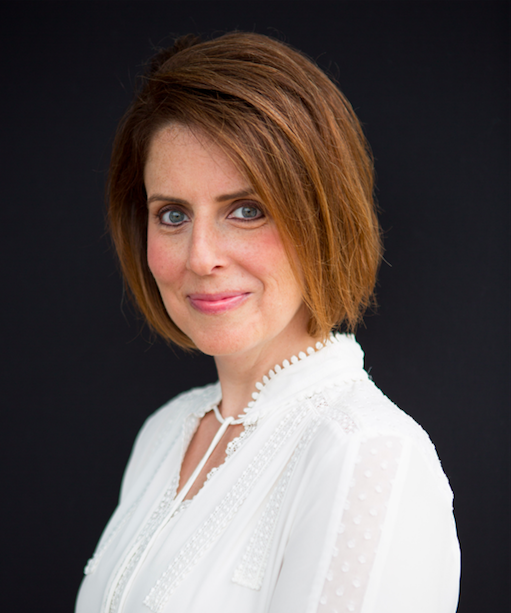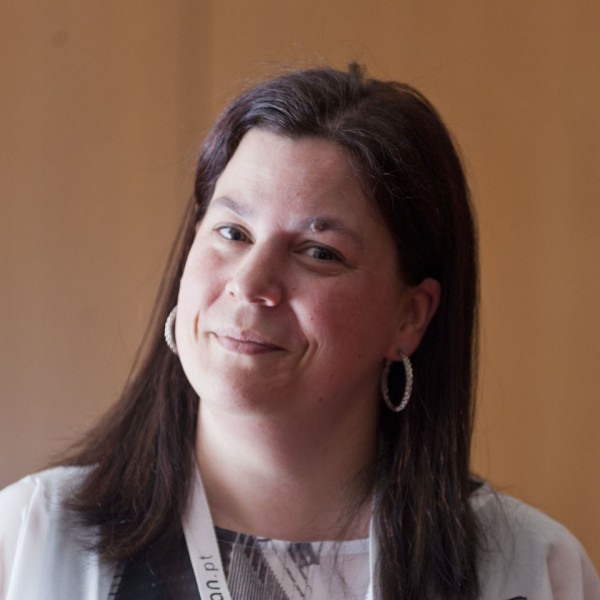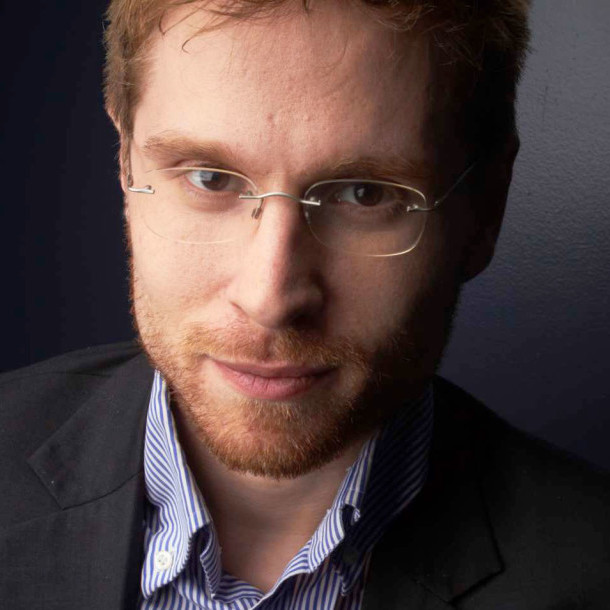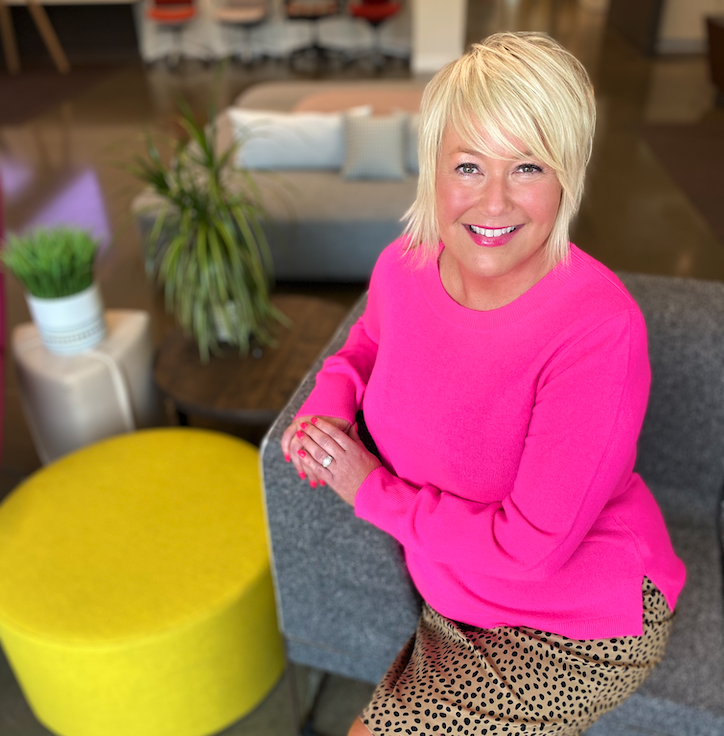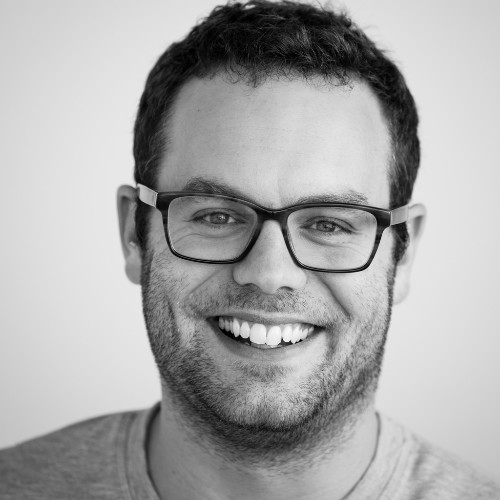Vital Circle filled a big need really fast. Seemingly overnight, Amanda Schleede and her co-founder created a system that uses wearable, non-GPS, non-cell phone dependent, non-biometric tools for contact tracing.
Companies need data around which employees might be compromised from the pandemic, but most employees aren’t ready to give up all their privacy and let employers know where they are every second of the day.
This is the new world of technology. We want to be in charge of what data is tracked and what isn’t. Amanda saw this as a great opportunity to build a tech company that didn’t just let tech go wild and do whatever it wanted.
How will offices react?
As many companies try to reintegrate their office, leaders need to be thinking of how to mitigate the risks. The pandemic still isn’t over, and not everyone is going to get the vaccine.
Amanda says leaders need to focus on their response. Outbreaks will still happen and you need to be ready when it does. Offices should also be built to allow for interaction, but at appropriate distances. This won’t be possible to mandate fully, so providing a good response is the next best thing.
Being a distributed leader
Vital Circle is a fully distributed team that covers four time zones. Amanda says that she’s learned the importance of having uncomfortable conversations as early as possible. Since you miss out on all the microexpressions around the office, there’s a lot of additional context that gets overlooked. A leader’s job is to make sure no one is left wondering where they stand.
Amanda says that it’s important to step back and ask, “Is there anything that I’ve done in my day today, not that I necessarily need to fix, but is there anything that I’ve done in my day today that I could rewind?” Reach out to team members and address questions.
She also tries to ask herself constantly how to build more engagement with her team since their work hours and distance make traditional culture building impossible.
Finally, she thinks that leaders also need to acknowledge how intimate everything has become. We know so much more about each other’s lives. That’s a good thing, but also something we need to be aware of as we move forward.
Links
Welcome back to The Digital Workplace podcast. Today our guest is Amanda Schleede. She is the CEO of Vital Circle. Hi, Amanda, how are you today?
Good. How are you Neil?
Doing great. It’s a fun day to be alive. We’re entering into springtime. Everything’s looking good and positive. So, I’m feeling up and up. I think it’s going to be a good day.
Yeah, it’s beautiful weather here in Chicago. So, looking forward to that weekend.
Yeah. So, let’s do this. To start off, before we get into your business and what you do, we’re going to do a check-in round question. This is your capture question to prove you are human and my question to you is, what is your go-to karaoke song?
Well, I actually think, I think ‘Stayin’ Alive’. You know, a little bit of John Travolta.
So, you’re doing the dancing while you’re singing Bee Gees?
Yeah yeah. You know how you go, ‘Stayin’ alive, Stayin’ alive’.
And you hit all the high notes too? That’s no problem for you?
I know. That’s about the extent of my singing. Because it’s almost like you can talk through it. You don’t really have to sing it. It’s like a talking thing.
And nobody knows what they’re saying anyway. That’s one of those songs like when you actually see the lyrics written out, you’re like, ‘Oh, that’s what that’s about. Okay.’
Yeah, exactly. Exactly.
All right. Well, you’re a certified human now. That works out for me.
I’m a certified human. I promise. Yeah. I’m not a robot.
Yeah. I’m trying to think, what my go-to karaoke song is. I actually keep a list. This is how weird I am. I keep a list on my phone, of karaoke songs, just in case I’m in that position. So, I don’t have one. I don’t have to worry about this because I just pull it up on my phone. There’s like 20 that I’m ready to go with.
Oh, wow, that’s good. Well, I haven’t been to a karaoke place in probably 20 years.
Yeah, we used to do this with my neighbor and that was like the big thing. So that’s what I’m most looking forward to about the end of social distancing. So anyway.
Although you could social-distance karaoke.
You can. So anyway, we’re going to start that up again soon, hopefully.
Okay, good.
But let’s talk more about you and not about me and my great karaoke skills. Tell us about Vital Circle. What do you do? How did it get started?
So, Vital Circle is a woman-owned business. We are headquartered and founded here in Chicago. We are founded by a nurse, who is, as I lovingly say, is in the pandemic. She is vaccinating now between 18,000 to 20,000 people a weekend at major vaccination sites in North Carolina. And so, we built Vital Circle to focus initially on the daily symptom tracking for employers, large groups, even in-person events, schools. Really, as I say, we’re industry agnostic. So, we look at, how can you manage and mitigate the risk of your employee or population’s health. And then in addition to that, we’ve integrated into it a wearable, non-GPS, non-cell phone dependent and no biometric contact tracing device. It’s a proximity tracing device.
So, it’s basically, it’s not basically, it is looking for another device of the similar type. So, as your employees or your population is going throughout the day, basically, the devices are recording the date, the length of duration of interaction, and then the distance. And so, when you have an employee who reports in symptomatic, or COVID symptomatic, or COVID positive result, you can then look and mitigate the risk of who the other employees within your group or other people within your population that need to be quarantined and kept out of the office space.
I love the way you’ve implemented this because you could go all out and all the technology, put all the GPS stuff in to make sure everything’s there, but then that freaks people out. Because it’s like when you’re tracking my every movement, you know where I am all the time, all sorts of stuff. So, you’ve actually taken away some of the technology to improve your end goal that’s supposed to be there.
Exactly, exactly.
So, I’m going to talk to you about a couple of different things. One is, your world is this, getting people safe, tracking things, contact tracing, which affects how businesses are going back into the office. And then later on, I’m also going to ask you more about your own work, because you’re a distributed team and how you operate. But let’s start with leaders who are planning to bring people back into the office. From your perspective, and the things you’ve been experiencing and talking to, what are people probably not planning enough for right now?
I think the biggest thing that people aren’t planning enough for is, how are we going to mitigate the risk of our employees once they’re all back in the office? So, it’s easy, and I jokingly say this, but it’s true, in my building where I live, I got a note last Monday saying, ‘We have an employee who has self-reported that they’re COVID positive.’ And that was all of the email that was. So, then I sat there as a resident of this apartment building thinking, ‘Did this person come into my apartment and fix my window last week? Is it the security guard? Who is this person?’ And it’s not that I needed to know that it was Neil. I just need to know what is that person’s role and what is the possible exposure that I had to that person.
And so, for me, I think employers are starting to think about, ‘We need to put the desk six feet apart. We need to have more hand sanitizing stations. We need to reduce the food in the cafeteria. How do we make it a touchless coffee system?’ All those things that are CDC safety issues, those are things that they’re focused on.
But I don’t think they’re really focused on, ‘What is the health of my employees? If Amanda and Neil are working in the office together, how close are they together?’ Because it’s, quite honestly, human nature. I mean, if you go and you just sit someplace and watch people in a line, they start six feet apart, but then they just creep back together slowly. Because it’s human nature. We’ve had years of muscle memory of this is what it’s going to be like. We get in a line, we get right behind the person in front of us. We meet somebody, we want to shake their hand, or hug them, depending on the situation. Most people have gotten that out of their muscle memory. But people just kind of naturally start to gravitate back together like a magnet. And so, it’s not only the ‘physical space’ things that employers need to be thinking about, but it’s also about what is the human nature of people.
I remember working in an office and we’d have a conference room with six people, and because it was the only conference room available and we’d need one more chair, somebody would just go steal a chair from someplace. Well, now you’ve got to get your employee group to understand that there’re four chairs in this conference room and they’re positioned exactly where they need to be and don’t move them and don’t bring any other chairs in there because we’re doing the social distancing, the spacing. But it’s just going to be human nature that people are going to interact with each other. And quite honestly, people want interaction. People are missing human interaction and seeing people. We were just talking about karaoke. Wouldn’t you love to go do karaoke tonight? But we all know that we can’t at this point. And so, I think employers need to be focused on not only the physical distancing and setup of their office space, but they need to be thinking about, what are the things that are just going to happen naturally because we’re human beings.
People are going to roll their chairs next to each other and have a two second meeting here and there, or a five-minute meeting here and there I should say. And then once somebody is identified as COVID positive or COVID symptomatic, you have to then figure out who they’ve had contact with. And a lot of times people, whether they purposely do it or non-purposely do it, leave out connections and contacts they’ve had with people. And so, by bringing in a technology like we have, it’s black and white. It’s data. It’s either you’ve had contact, or you haven’t. And so, it’s easy for HR and operations and leaders to identify who’s had contact with who, and then mitigate that risk from there.
So, I think, as employers are thinking about coming back into the space, it’s not only about how can we mitigate the risk of employees getting too close together or sitting too close together, but also then how can we mitigate the risk when there is some type of an outbreak. I mean, I guess this is considered a plague, but it’s not our pandemic. But if there’s an outbreak and you have an employee who comes to work, asymptomatic, is fine, and then all of a sudden, wakes up tomorrow morning with a temperature of a 103 and loss of taste and smell, like, they didn’t just get COVID tomorrow or on that day. They’ve had symptoms, maybe they didn’t feel them, but they’ve had some kind of symptoms and they’ve been infectious. And so, who have we exposed within the office space?
Do you feel like the focus should be less on prevention and more on response at this point? From that I mean I know we’re going to do our best. If you’re in the office, you’re wearing masks or you’re apart from each other and everything. But like you said, something’s just going to happen and we’re going to slowly feel more comfortable the longer we’re in those situations and let our guard down. So yeah, do the basics in terms of prevention and types of things. But really, in terms of planning, planning for that response when something does happen to know, ‘Okay, this is how we’re going to handle it.’
Yeah, I mean definitely. And I think it’s having the plan before the crisis happens. And so, it’s making sure that you know what you’re going to do when an employee does pop up positive, because it’s going to happen. I mean, even with a vaccine. I’m not an anti-vaxxer. I believe fully in the vaccine. When my number comes up, and I jokingly say, when my 11 million number comes up in Cook County, but it’s true, I’ll get in line, I’ll get my shot. But not everybody’s going to want the vaccine. There’s going to be a huge population who would not want it. I mean, as we know, last year 46% of adult Americans got the flu shot, and the flu shot has been around since like the 40s.
So if, that compared with the fact that a third to a half of the United States doesn’t believe this is a pandemic or doesn’t believe that COVID is real or the numbers are real, if you add those two together, how do you get to the 75 to 80% herd immunity? And there’s some people who are just naturally immune to it. So, I’m not saying that we can’t get there. But it’s just that what is the worst-case scenario and how do we plan for that? Because it’s easier to plan for the worst-case scenario and not have it happen than to not plan for it and have it happen, and then be caught with your pants down.
Yeah, for sure. Tell us a little bit about your team itself as it exists. Where are you located? Are you all in the same place? Are you spread out?
We are completely spread out. We are living in the virtual world. We started Vital Circle in the height of the pandemic, so in March-April of last year. And so, our entire team has been virtual the whole time.
Did you all know each other ahead of time or did you just kind of come together for this?
Well, we came together for this through a hackathon. And then, I will say that I quarantined for two weeks, and then spent three weeks in North Carolina with Becky in her house. And then when I came back to Chicago, I did my additional two weeks of quarantine. So, I followed all the rules. But we are a virtual group. So, we have developers across the United States. The head of our technical team lives in California. I’m here in Chicago. Becky’s in Charlotte. We have an employee who lives in Indiana. So, we’re just really spread out across the entire United States, which is great because then we have more exposure to people across the States.
And what’s that been like for you? Do you have experience working with distributed teams like this? Is this normal for you or have you learned a lot in the last year?
It’s somewhat normal for me, but I have learned a ton about, obviously, starting a group virtually. Because it is different, like, if you guys can all get together and have a week-long thought session and then say, ‘Okay, everybody go home and do your stuff.’ In this situation, we completely started virtual. So, the biggest thing that I’ve learned about it is communication. Open lines of communication, being really honest and in integrity with your team. So, instead of just bottling up that maybe somebody’s irked me or rubbed me wrong, I’m fully willing to have those conversations, even if they’re uncomfortable. Because I really believe as a leader, it’s knowing that your team could be smarter than you in a situation. And so being open to that feedback.
And then I think it’s also just been really important, especially in these pandemic times, to check in with your team, to make sure that everybody’s okay. And so sometimes I’ll call our head of development and he’ll be like, ‘Okay, what do you need? What’s going on?’ And I’d be like, ‘Nothing. I’m just calling to see how you’re doing today. Like, yesterday was a hard day. Did you get sleep last night?’ I always claim that Paul is never sleeping. He lives in California. I’m on the phone with him at 7am and on the phone until midnight, my time. And I’m like, ‘When do you sleep?’
So, I’m curious now. You talked about bottling up conversations, checking in with your teams. So, these are things that were good to do even when you’re in the office together. So, what is it about the digital experience that we’re having now that all of a sudden makes it realize, like, ‘Oh, we need to do this?’ Or what were we missing before in the physical world that it didn’t seem so important back then?
Well, I think it’s the physical interaction. You know, what I mean? I mean, because you know and we all know, if you’re in the office and your boss is mad at you, you’re going to be able to tell. There are those subtle little things, the way that they walk-by, the way that they look at you, those little things. Well, that doesn’t happen anymore. And I think with people working virtually, the situation we get into is that you don’t know. Like they sit in this worry state of, ‘Oh, I screwed up this project or I forgot to meet this deadline.’ And in our world, like as a leader, or even an employee, we’re sitting in that. And so, we’re sitting there like, all day thinking, ‘Oh my gosh. Is Amanda mad at me because I didn’t meet that deadline?’ Or ‘I kind of screwed that project up for that client but we’ve made it better, but is she still mad at me?’ And a lot of people are willing to have those difficult conversations. And so, it’s just identifying that. There’s times when I go to bed and I’m like, ‘Oh, I need to call so and so because they’re probably spinning. Like they’re sitting there and thinking about this over and over and over again.’ And where I’ve thought, I’ve been like, ‘Oh no, I’m done. I’m over it. I’ve moved on.’
It’s just like early on in sales when I would talk to people, and I have a friend who’s a really good entrepreneurial individual but really good at sales, and I would call him and be like, ‘Why are these people not getting back to me? I’ve sent them a proposal. I followed up with them. Why are they not getting back to me?’ And he would say to me all the time, he goes, ‘Amanda, you are completely focused on Vital Circle, like Vital Circle is your life. The people on the other side have deadlines of their own, issues with their employees. Yes, they have Vital Circle to decide on, but it’s not their top priority. For you, your top priority is Vital Circle. So, you’re spinning and sitting in it.’ And it was such great advice. And every once in a while, I’ll reach out to him and say, ‘Okay, I need your advice again.’ He’s like, ‘Okay, just breathe.’ Because he’s been doing sales for years.
But it’s true. Because if you’re that employee who’s sitting at home, maybe has or hasn’t left your apartment or house all week, hasn’t had any interaction with a human being except for Zoom, and you think you may have irked someone or maybe I called you and said, ‘Hey, I need XYZ, tell me this’ and then I hang up. Then you’re like, ‘Oh my God, is Amanda mad at me? What did I do?’ So, I think as leaders, it’s really important for us to be aware of, number one, how we’re interacting with our team. But then I also think it’s really important for us to take a step back and be like, ‘Okay, is there anything that I’ve done in my day today, not that I necessarily need to fix, but is there anything that I’ve done in my day today that I could rewind?’
And it’s not necessarily that I can take back the words that I said, or the way that I delivered it, but can I reach out to the person and just say, ‘Neil, you know when I called you this morning and I needed that one answer, I just want you to know that I really appreciate you picking up the phone and answering that. Because at that moment I just needed 30 seconds of your time to do it and I just want to make sure we’re good.’ Because you could have been sitting there all day going, ‘Well, why did Amanda call me and only talk to me for 30 seconds? Does she not want to know what my day is like?’ But again, for me, I’m focused on X and that person’s spinning on something else.
Yeah. I find it to be one of the greatest paradoxes right now, is that there’s never been a more important time in history that you take care of the people on your team because there’s so much uncertainty and this last year has just been so chaotic in so many ways, like that should be like one of your main focus, as a leader. And yet, we’ve taken away nearly all the signals that you usually get to do that. You only have these virtual interactions where it’s hard to know because if I’m just sitting next to you all day, I can sense if you’re relaxed or if you’re tense. But I don’t know if we’re not communicating like that.
Right. Exactly. And Neil sometimes, the other big thing for our team is, whenever we’re on a conference call or like this, we are always on video. Like I have team members say, ‘Well, I didn’t shower today.’ I’m like, ‘I don’t care. I can’t smell you. I don’t care. Put on the video.’ And that’s a rule with me. Whenever I get on the call with somebody, I’m like, ‘I’m putting on the video. You don’t have to, but it just kind of makes me feel a little bit more connected.’
And I think the other thing as leaders that I really found important is just taking a step back and thinking, ‘What could I do to engage the team a little bit more?’ I mean we’ve all done the happy hours at 4:30 on Friday. We’re all sitting around drinking a glass of wine and joking. But what other things can I do to make this fun? So, playing games. At Christmas time, I was thinking like what would the team want? And I live in Chicago and I sent them all Chicago food gift baskets. Do you know what I mean? Like frozen pizzas and things like that. And everybody got it all on the same day. And so, then we had our team call, and I was like, ‘Everybody having a deep-dish pizza tonight?’
Did you do the hot dogs too or what did you do?
I did hot dogs, I did the Italian beef, and I did the pizza. So, I did that. You know, I can’t remember, it’s like ‘the Chicago’. there’s a name for it but. Oh, and I did cheesecake.
Oh wow.
I did the cheesecake too. So yeah. So, some people who were single were like, ‘Wow, this is enough food.’ And I was like, ‘Great. Just put it in your freezer.’
I know you don’t seem to have any plans to create a physical office setting for Vital Circle anytime soon. But as a thought experiment, if you were to create an office space for, let’s say, 25 people. Let’s say you’re going to grow and you’re going to hire a lot of folks that were there, what would that space look like, given the world we live in right now? What would you want the office to be? What’s the function it serves?
Yeah. I think the function it would serve, number one, is just having the connection with human beings. In my previous roles before I started Vital Circle, I’ve done office build outs and moves and stuff like that. I’ve done hundreds of them. And so, I’ve seen how the physical space has gone from private offices for the executives and very large cubicles with high walls, and this was in the 90s, to now. Now it’s you get maybe a four- or five-foot table, maybe it’s a standing desk or not and there’s no panels. There’s no anything between you and the person next to you. You create your own little space by getting your monitor and putting your monitor where you want it and like a picture of your kid that’s extremely large.
So, I think, for me, if I was going to dream up an office space, I think there’s going to be pods of areas to work like comfort places to work and have team meetings. Likely there would be some enclosed conference rooms because just physically you have to have that in order to have a meeting with a client or a presentation. I mean I always laugh when people are like, ‘Oh, I want to put a ping pong table in my office.’ And I’m like, ‘Really?’ Because you have an open office space and if the two IT guys, not picking on the IT guys, but if the two IT guys are playing ping pong while somebody’s sitting at their desk five feet away, do you know how irritating that is to hear that dink, dink, dink, dink? You know what I mean? So, I always joked with clients when I would do that. I’d be like, ‘You realize that the ping pong table is going to turn into a buffet table pretty soon, right?’ Because I guess it’s not going to do anything else.
But I think it’s, number one, it’s safety. So, making sure that as people come back into the office or even come to the office, feel safe. So, I think, it’s how do we create a space that feels open and airy, but everybody still gets to have their own, I don’t want to say enclosed space, but just enclosed space? So, I would think it’d be a lot of light colors. I think there’d be probably a lot of Plexiglas or glass involved in it where people still feel they have the safety and protection of an enclosure, but they’re not enclosed off from everybody else.
Yeah. The more I think about it’s like, ‘Okay, what’s the function that the office serves?’ And like you said, it’s got to be there for that physical personal interaction that we are craving right now and need to have on some level. So, making sure there’s space for that but then also recognizing that a lot of people, their home just doesn’t work for work. And if they really need to focus, they need a space to do that. So, to be able to provide that as an employer is a great thing. But I think we will need to rethink what’s the function of the office. It’s not just by default to have it but it’s an add-on feature. So, what do you have to do? It’s a really good thought.
Exactly. Yeah. I mean we’ve all become used to a kid screaming in the background, the dog starting to bark. I was at a call the other day with somebody and their kid came running through the kitchen with no clothes on. And she was like, ‘Oh my God, I’m so sorry. He likes to take his diaper off and run around.’ I was like, ‘It’s fine. This is life.’ How many of us are Zoom-ing from where all! I’m Zoom-ing from one of my tenants’ front of their stores right now. But how many of us are Zoom-ing from our bedrooms. This is another thing to think about. We have, as a society, opened up our homes to our fellow employers or fellow employees. And so, I think there’s also this level, from a leadership standpoint, of thinking how intimate that has gotten. I mean if you really think back to it, would you have thought a year ago today, that I’d be, I’m assuming that this is a living room behind you, but a living room with your books and everything?
I always think of things like when I’m in my office, my physical office in my house, I always look behind me to see what kind of books people can see that I’m reading. Because, I mean, from a place of love I’m saying this, people judge. You know what I mean. And so, there’s just that aspect. So, I think number one, people are just dying to get back to, I hate the coined term ‘new normal’, but they’re dying to get back to the new normal. They want to get back. I had a friend who works for a very large real estate company and they did a survey and 80% of people surveyed said that they want to get back to work at some level, whether that’s four days a week, five days a week, three days a week, whatever that is, that specifically would have to be figured out. But people want to get back together. They just want to make sure they’re doing it safely.
Makes sense. Amanda, it’s been great to chat with you. We’ve learned a lot from this situation and this conversation. So, tell us a little bit about where we can go to learn more about Vital Circle and the rest of your work?
Yeah, so we have our website which is www.vitalcircle.health. We are on LinkedIn. We’re on the social media sphere. Luckily, that is not my zone of genius. I have a team that does that. You can get us on Twitter and LinkedIn and Facebook and all that stuff. But if you want to reach out and learn more about mitigating risk for your team or a population or human beings that you’re getting together, reach out to us. We would love to talk to anybody about doing symptom tracking and looking at the health of your population and then the contact tracing side of it so that when somebody is identified as symptomatic or COVID positive, you can mitigate the risk of spread.
And ultimately, our goal is that if you can nip it in the bud and figure out that if Amanda is COVID positive and I’ve exposed Neil, we both work from home for the next two weeks. And it’s just two of us out of the office before it becomes five and then 10. And then, okay, we’re closing down the office. We have to do a deep clean. We’re closing down the plant, the manufacturing plant, all that kind of stuff. We would love to hear from everybody.
Cool. Well, great. Hopefully, it’s not the last time we interact. We’ll definitely invite you back to some other things going on, but it’s been great to meet you and get introduced to you.
Awesome. Thanks so much, Neil.
With over twenty-five years of healthcare focused experience within the management consulting, service, and venture capital worlds, Amanda has honed her skills to get the job done. Her previous experience working for multiple entrepreneurial based organizations provides her with the experience to grow Vital Circle, anticipate client needs, and the road ahead. Her extensive experience focused on organizational design and needs assessment, provides Vital Circle clients with an inside perspective in developing and implementing a full health protocol playbook for their organization.
